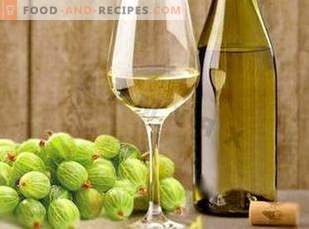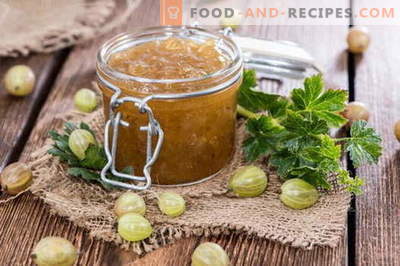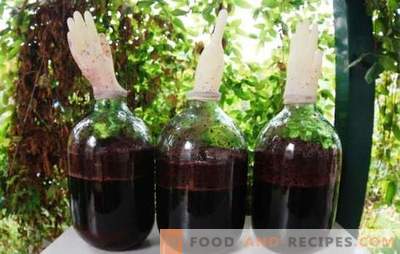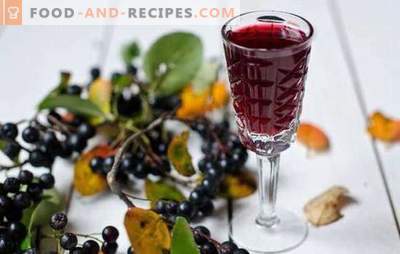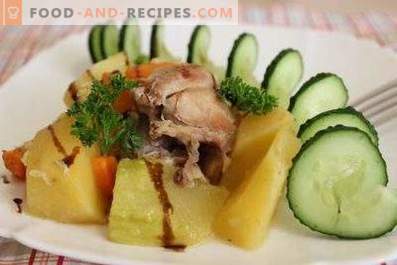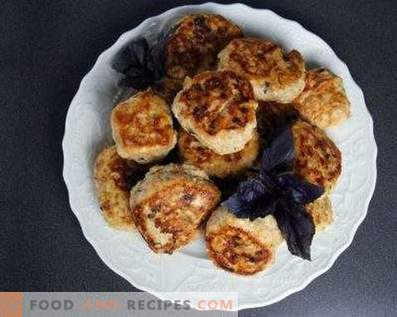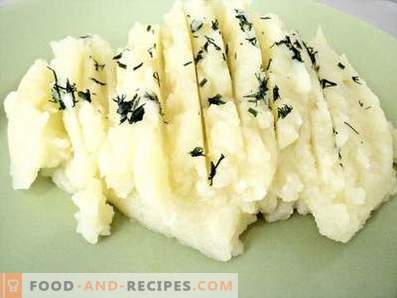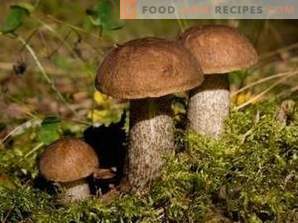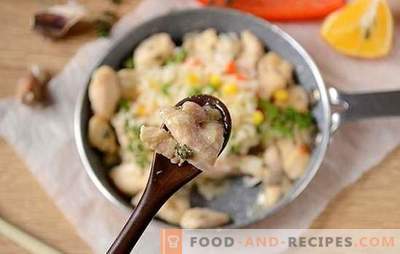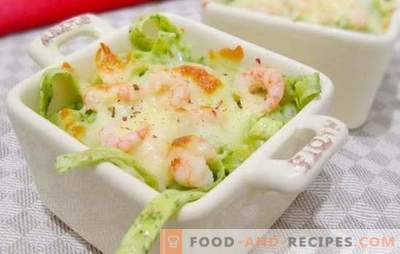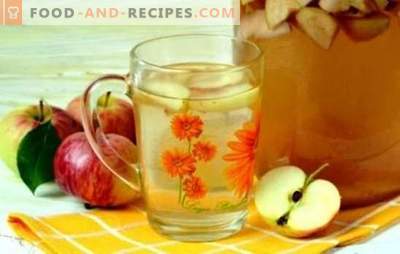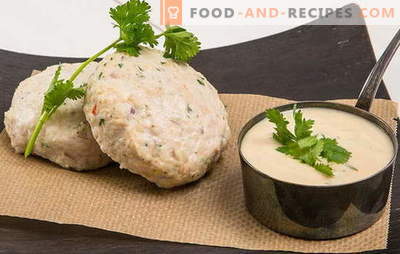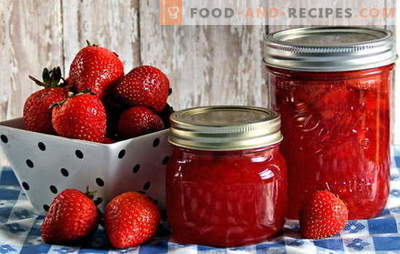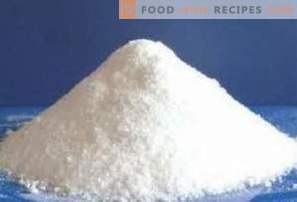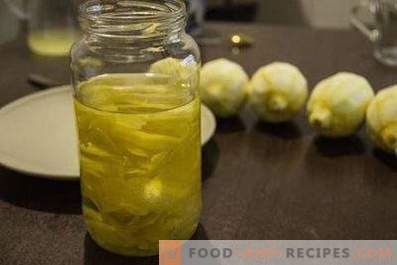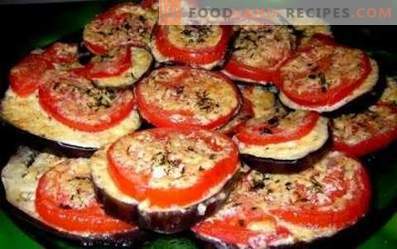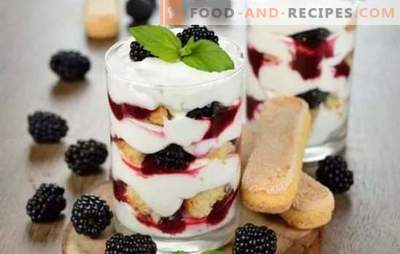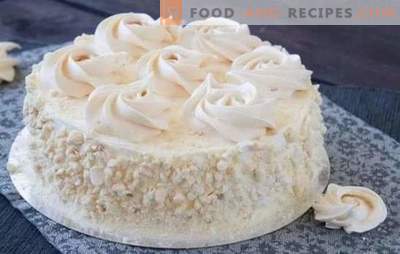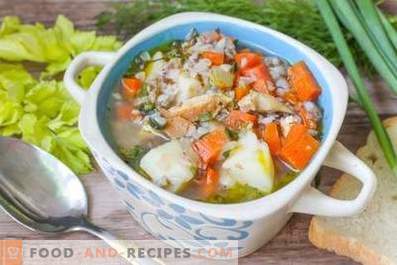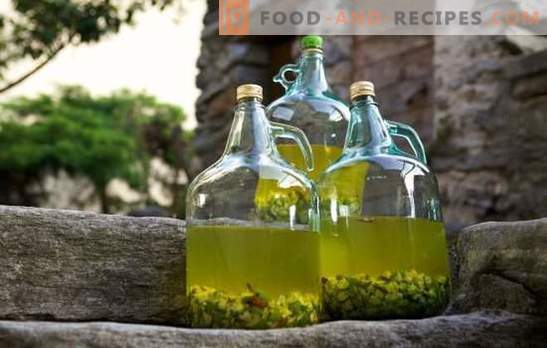
Fruit and berry wines are a special category.
At first glance, the technology of their preparation is no different from the production of grape wines, but some nuances still exist.
They are due, primarily, to the biochemical properties of fruit and berry raw materials that affect the quality and taste of wine.
Gooseberries are called “northern grapes”. But with some external similarity, the same valuable biochemical composition and varietal variety of berries, in terms of requirements for wine materials, gooseberries are inferior to grapes in terms of juice, sugar and acid. However, the variety of flavors that other fruits, except grapes, do not stop home winemakers in an effort to create new wines. In addition, grapes are a crop that is more demanding on soil and climatic conditions, and the vast majority of its varieties are not grown in areas remote from the south of Russia. But other fruits regularly and everywhere give generous harvests to summer residents and residents of the countryside, allowing them to procure not only jams, jams, compotes and juices, but also regularly replenish their home wines collection.
Gooseberry Wine - General Technological Principles
As noted above, for making wine, the most important criteria for the selection of raw materials is a balanced sugar and acid content, as well as the ability of fruits to separate the maximum amount of juice. According to these parameters, grapes are considered the best raw materials for winemaking. As for the other crops, including the gooseberry, it requires the use of special preparation of raw materials before the start of the fermentation process.
Gooseberry, all one and a half thousand known varieties, has a significantly higher acidity than any grape variety, as well as significantly lower sugar content. Therefore, the gooseberry juice before setting for fermentation must be improved: add sugar and water. Wine from natural gooseberry juice, without added sugar, has low alcohol content and is not persistent, quickly losing the qualities inherent in good wines.
Dry gooseberry wines, have a strength of up to 12%, stored no more than 6-8 months. The strength of the blame gives raw materials containing large amounts of sugar, which is not enough in the gooseberry. There is a simple formula for increasing the strength of alcoholic beverages: 20 g of sugar increases the strength by 1%.
On average, gooseberry berries contain 9% sugar. Starting from this value, we add the required amount of sugar to obtain the required strength, based on one liter of juice.
The best of these berries to prepare strong, dessert and liqueur wines. A good result can be achieved when blending (blending) finished wines or raw materials in the process of its processing. Gooseberry is not a “grape”, but belongs to the genus of currant, therefore its combination with any varieties of currant is very harmonious and complementary. In principle, the gooseberry berries do not have a sharply defined smell and taste, therefore this culture can be used in the preparation of wine not only with any fruit, but to create good vermouth compositions, which are known to be prepared with the addition of alcohol and various spicy herbal compositions.
Water in the manufacture of gooseberry wine is necessary in order to balance the acidity and increase the volume of juice. Gooseberry contains 2.5% acid. To get a good quality wine acid is two times less. Accordingly, the juice or pulp need to be increased in volume using a neutral liquid exactly twice. The high acidity of the gooseberry is a prerequisite for instantaneous “occupation” of the wort by a colony of microorganisms that create vinegar, not wine, but wine. Wine yeast, of course, also needs acid, but in much smaller quantities than its content, even in ripe and sweet gooseberry berries. It is important to observe the measure and do not try to add water more than the specified value, so that the wine does not turn out turbid, with a rapidly developing putrefactive smell. Use good quality water, distilled or purified. Despite the fact that water is considered a neutral medium, everyone remembers that it is a good solvent and has a taste that it will pass on to the wine. In extreme cases, just boil it, let stand and carefully pour it into another container before adding wine to the future. It is even better to add water along with sugar, having prepared a syrup. Improving the separation of juice from the berries can be by pre-fermenting the pulp. To do this, gooseberries are sorted, carefully sorted, removing moldy or rotten berries, cleaned of dry inflorescences, stalks, but not washed, in order to preserve the wild yeast that lives on the surface of all fruits in natural conditions. The degree of ripeness of the berries also affects the secretion of juice: it is never possible to squeeze out more juice from green berries than from berries that have reached technical maturity. But at the same time, over-ripening should not be allowed, since the opposite effect begins: the amount of juice in over-ripe berries decreases, and their taste becomes worse, which necessarily affects the quality of the wine.
The prepared berries are crushed, sugar or honey is added, the container is covered with gauze rolled up in several layers to leave access for oxygen and as much as possible to protect the wort from dust, debris and bacteria harmful to the wine. Immediately after the start of fermentation, a water seal is installed, or a rubber glove with a small hole is put on the neck of the bottle to release the accumulated gas. For the gas released during fermentation inside the tank, free space must be left, for which bottles with “playing” wine are filled with no more than 3/4 parts of the volume in order to avoid breaking the filled vessel.
Given the high acid content in the gooseberry, properly select the dishes and equipment for work to prevent oxidation.
Recipe 1. Dessert, sweet gooseberry wine
Fortified dessert wines contain more sugar than table wines - up to 20%, but this does not mean that all the necessary sugar should be added immediately. Everyone knows that fruit and sugar are also present in jams and jams, but fermentation does not occur. Why?
Excess sugar inhibits the work of yeast, and its addition in large volumes gives a preservation effect. Even the simplest living organisms are programmed by nature in such a way that too favorable habitats, excess stocks act on them in a relaxing way. Simply, sufficient supplies of food and energy suppress the spirit of competition and “struggle for a place under the sun”: why rush and push each other in the queue if sugar is in excess and is enough for everyone. Therefore, to create semi-sweet, sweet and dessert wines, add sugar in portions, with an interval of 7-10 days, so that the yeast “is not lazy”. Composition:
- Mash (chopped berries) 7.1 kg
- Water 3.6 liters
- Sugar 3.8 kg
- Fortress - 15-17%;
- Acidity - 0.8%
- Output: 12 l
Cooking:
- A kilogram of gooseberry leaves the same amount of pulp - crushed or crushed berries. From the same amount of raw material you can get up to 550 - 600 ml of juice. The volume of loss of the finished wine will depend on the method and quality of extraction and subsequent clarification, filtration, but should not exceed 10%.
- 7.1 kg of berries = 4.44 liters of juice, unclarified. The color of the finished wine resembles the color of freshly brewed black tea.
- Sugar should be divided into about 3 equal parts. From the first portion, boil the syrup by adding an equal amount of water. The color of the syrup is golden brown. When making it, remove the foam. That is, you need to take 1.25 kg of sugar, add the same amount of water, boil the syrup and cool it to 20 degrees to pour it into the pulp. Just boil the rest of the water, cool to the same temperature, mix with the contents of the bottle and keep the bottle sealed with a gauze filter or cotton swab. Within 3-4 days, before the start of the active fermentation phase, stir the wort 2-3 days a day. When bubbles appear, install a hermetically sealed shutter, allowing air to move only to the exit. After 10-12 days, add the second part of the sugar, and in a week - the rest.
- During the fermentation process, keep the wine at a temperature not lower than 16 degrees. The optimum temperature is 20-22 degrees. Keep out of direct sunlight. When active fermentation is completed, that is, the visible signs of gas evolution will disappear, try the wine. At this time, if desired, you can increase the sugar content and put the bottle in a cooler room for clarification. When a sediment appears on the bottom, pour the wine with a tube, trying not to stir the settled fine particles. If necessary, repeat the operation after a couple of weeks. Pour the wine into bottles, seal and store in the basement.
Recipe 2. Gooseberry fortified, semi-sweet wine
From the berries of the gooseberry can be prepared fortified wine with the addition of alcohol, wormwood notes and other herbs. The composition of herbs depends on personal preferences, but the presence of alcohol, sugar and vegetable flavors greatly ennobles even unstable wines like gooseberry wine.
Composition:
- For strong table gooseberry wine:
- Wine yeast 300 g (1 sachet)
- Sugar 1.8 kg
- Gooseberry Juice 3.5 L
- Water 5.3 L
- Dry bird cherry (berries) 150 g
For tincture:
- Alcohol, purified (96%) 1.0 l
- Dry grass:
- Wormwood, Alpine
- Lemongrass
- Melissa
- Nutmeg
- Chamomile
- Cinnamon
- Vanilla
- Cardamom
- Coffee, roasted
Cooking:
- Pound all dry herbs into a powder, making the composition arbitrarily to your taste. At the end of the infusion you should get a strong drink with a very rich aroma and taste: Remember that they will need to pour wine.
- The duration of the preparation of a strong gooseberry wine reaches two months. All this time, alcohol tincture must be stored in a tightly closed container, in a dark place and shake regularly. Before topping up the wine, it must be carefully filtered.
- Prepare the berries for the wine, mash them and combine with half the sugar. Boil the water, cool it to 22 degrees, add the second part of the sugar and stir until the lumps are removed. Add the yeast water to the preheated wort. Add black cherry to the wort. Stir well before fermentation, and install the valve immediately. After fermentation, remove the wine from the sediment and add the purified tincture. Stir and, tightly closing the container, remove the vermouth for a couple of months to mature in a dark place. At this time, storage is allowed at room temperature. If necessary, re-remove from the sediment, after which the drink can be sealed in bottles.
Recipe 3. Gooseberry Wine - Refreshing Cocktail
Sometimes a well-made homemade wine doesn’t fit a little to taste or alcohol content. You can solve the problem by mixing two or three kinds of fruit wine, selecting them depending on the properties that you need to get in the final drink. For example, to flavor a gooseberry wine, you can combine it with raspberry or strawberry wine, in equal parts or by adding more raspberry flavor. Mixing the finished wines can lead to re-fermentation, especially if they have different strength and sugar content. To prevent this, the wine is sealed by adding alcohol or vodka. You can use other, stronger drinks, giving the wine a new taste.
Composition:
- Gooseberry wine, table (12%) 3 l
- Mint liqueur (40%) 0.7 l
- Lemon tincture (93.6%) 300 ml
- Sugar 1.2 kg
- Water 1.0 l
Cooking:
Boil the syrup by removing the froth. Mix refined and cooled to 25 degrees syrup with wine, liqueur and tincture. Drink soak for at least 7-10 days, placing in a place inaccessible to the sun's rays.
Recipe 4. Gooseberry liqueur strong wine
Composition:
- Sugar 6.0 kg
- Gooseberry berries 10.0 kg
- Tea, black (large leaf) 20 g
- Water 0.25 l
- Vodka 2 liters
Cooking:
- The volume of juice from the specified number of berries is approximately equal to 6.0-6.3 l. To this volume you need to add 4 liters - the amount of sugar. For wine fermentation, you must choose a bottle of at least 12 liters.
- All preparatory stages of liqueur wine preparation are similar to those described above. Cooked pulp is mixed with sugar in stages, dividing it into three parts. After the start of fermentation, the pulp is wrung out. The cake is poured with vodka (40%) and infused until the end of fermentation of the juice. After alcohol tincture is filtered and added to the purified and clarified liqueur.
- In this recipe, water is practically not used, except for a glass of boiling water for brewing strong black tea, which is then cooled and added to the finished liqueur at the end of fermentation. Warm tea is added to brighten up the liqueur. In addition, tannins contained in it, improve the quality of liqueur, prolonging its shelf life.
- After clarification, the liqueur is removed from the sediment and alcoholic tincture is added to it. If necessary, after a week the removal from the sediment can be repeated and pour the drink into bottles. Store liquor better in a dark place.
Recipe 5. Gooseberry and raspberry wine
Composition:
- Gooseberry 3 kg
- Raisins (for sourdough) 400 g
- Honey 2.2
- Raspberry 5 kg
- Water 4 L
Cooking:
- In advance (5-7 days), place the raisins for fermentation in a jar, fill it with warm boiled water and close the jar with a cotton-gauze napkin.
- Mash the berries in an enamel pot, add liquid honey and sourdough. Bind the container with gauze folded in four layers. Stir in the morning and evening, placing in optimal temperature conditions (22-25 degrees), away from drafts. After the start of fermentation, clean the wort using a press and filter, after connecting it with warm boiled water. Pour into the bottle and set the valve.
- The description of the further cooking process is described in detail above.
Gooseberry Wine - Tips and Tricks
- The best containers for wine storage and aging are oak barrels. But at home, it is difficult to use such containers not only because they are expensive, but also because it is not always possible to accommodate them. Try to resort to a little trick: buy in the pharmacy oak bark and, wrapping it in gauze bags, put in a container with wine.



